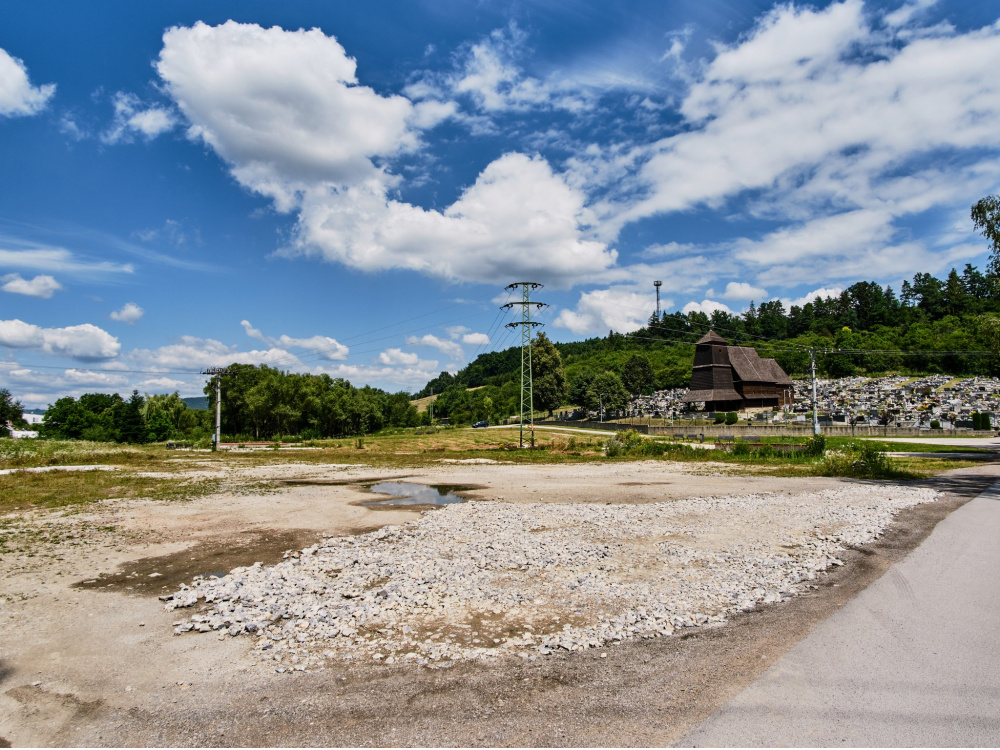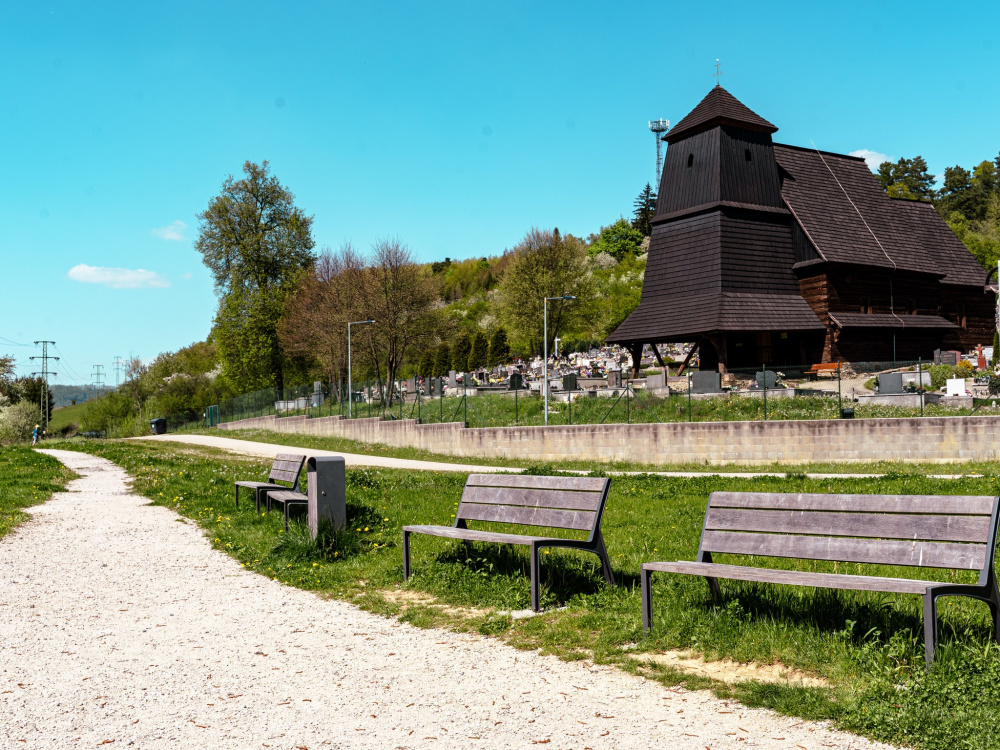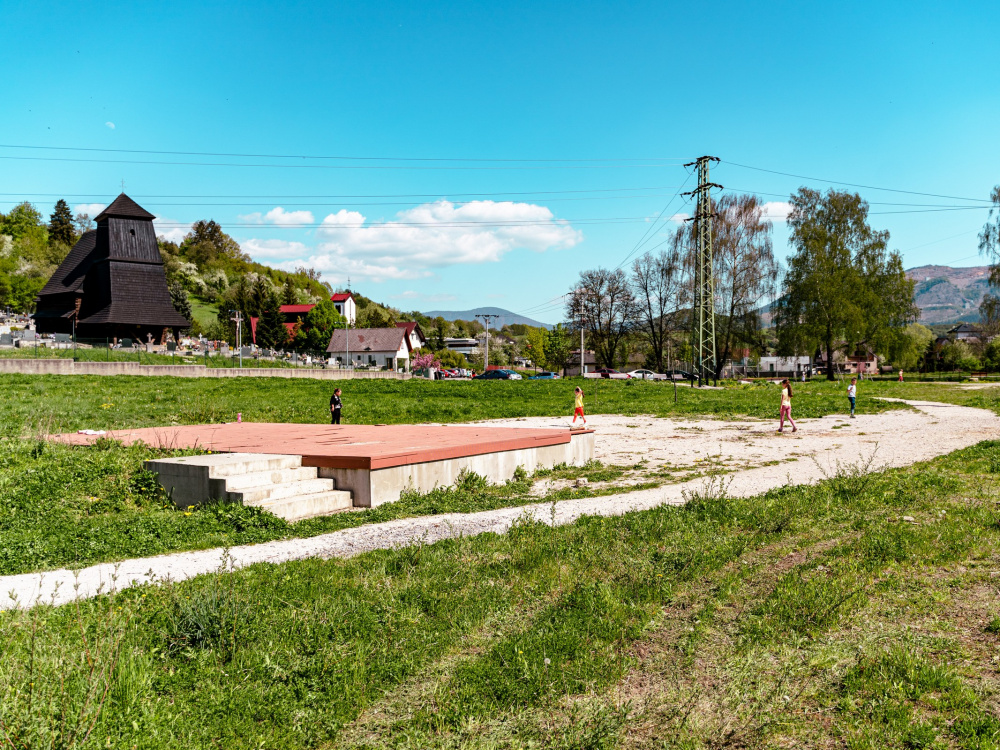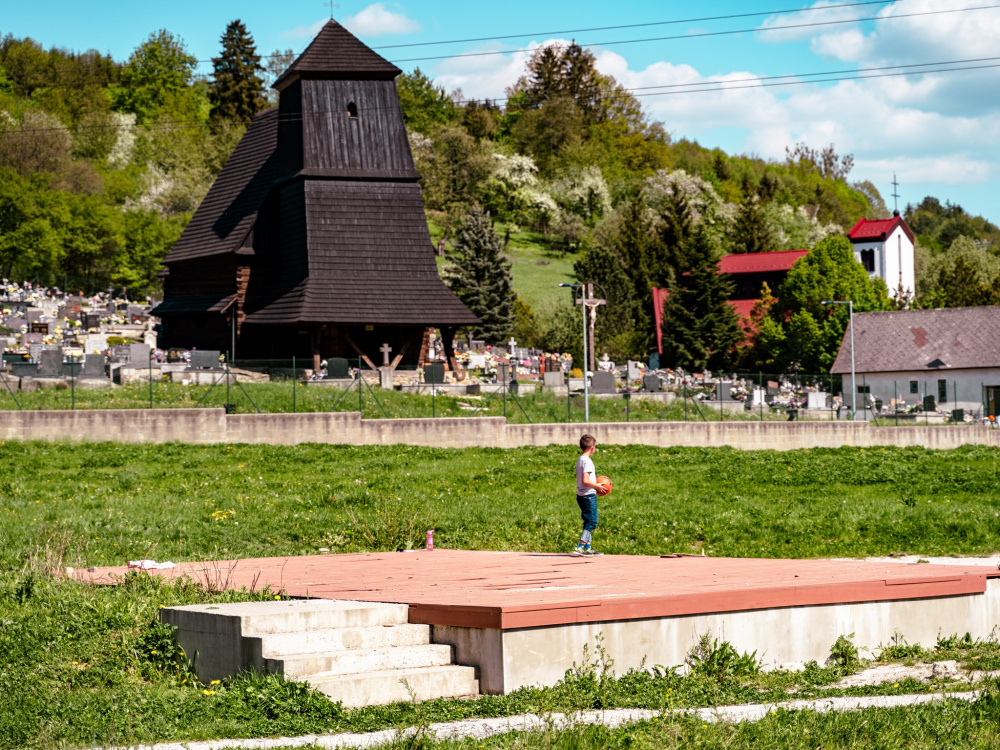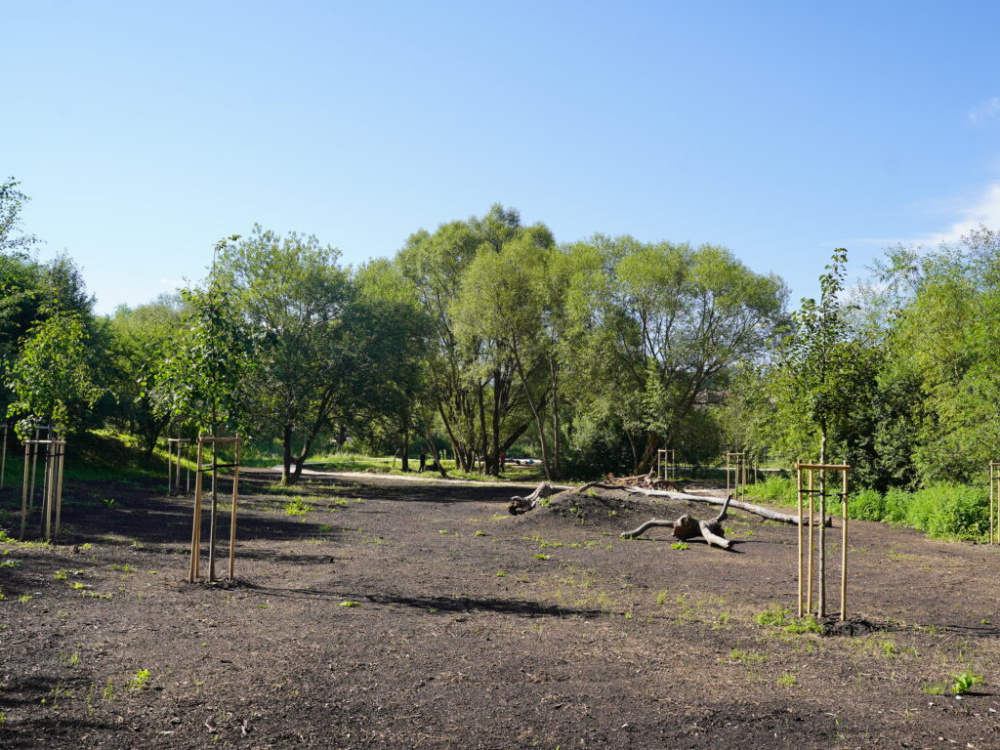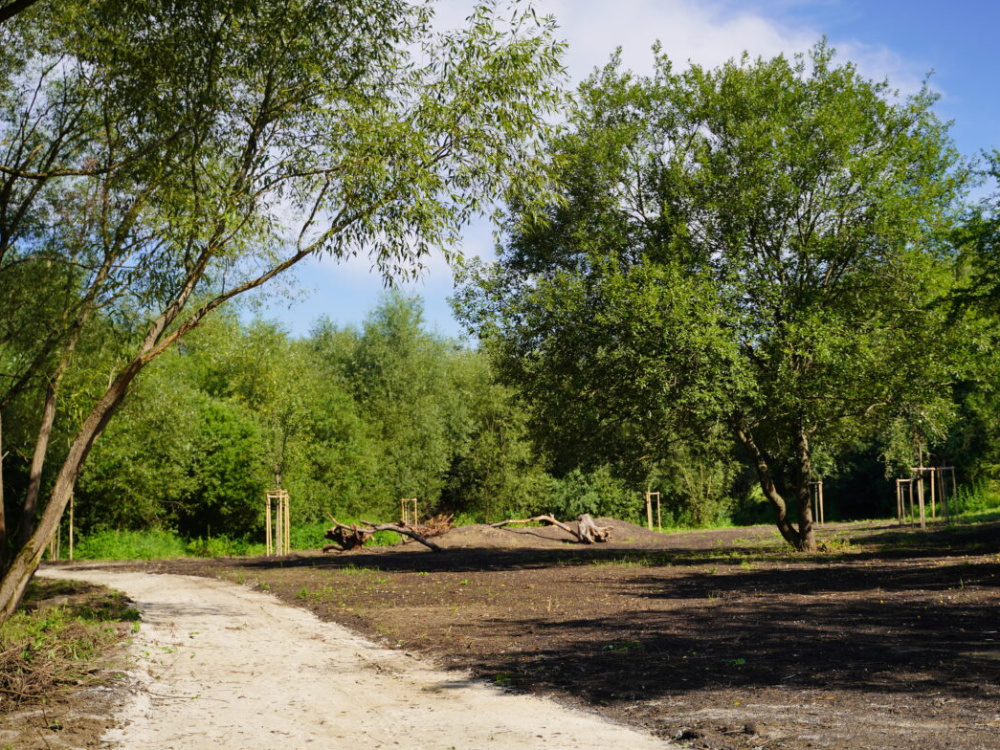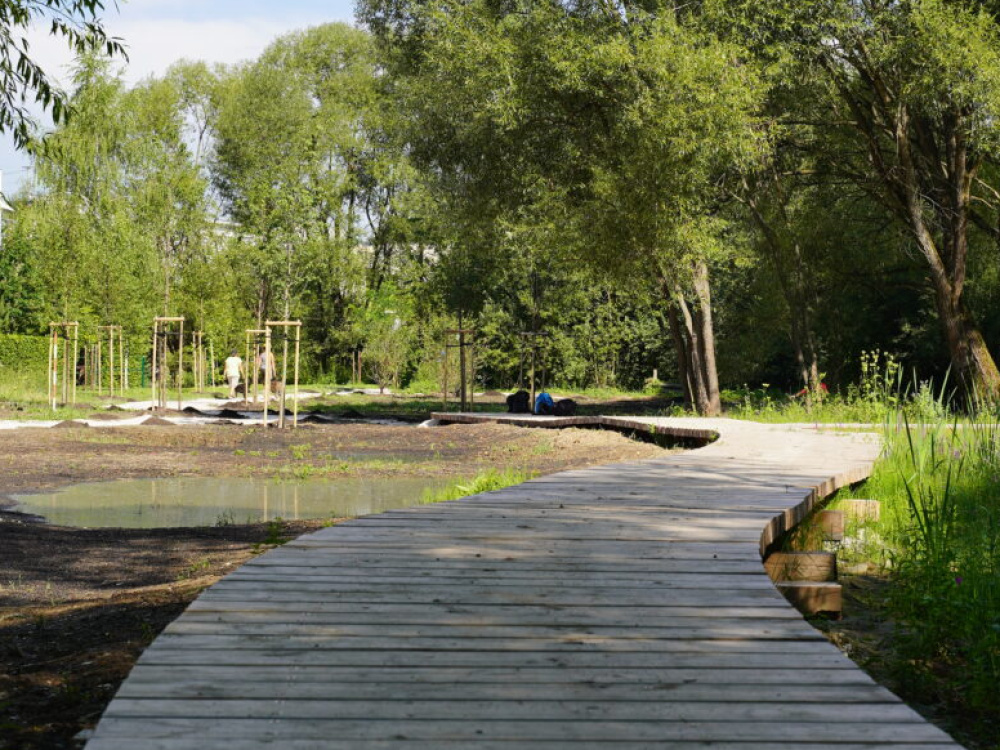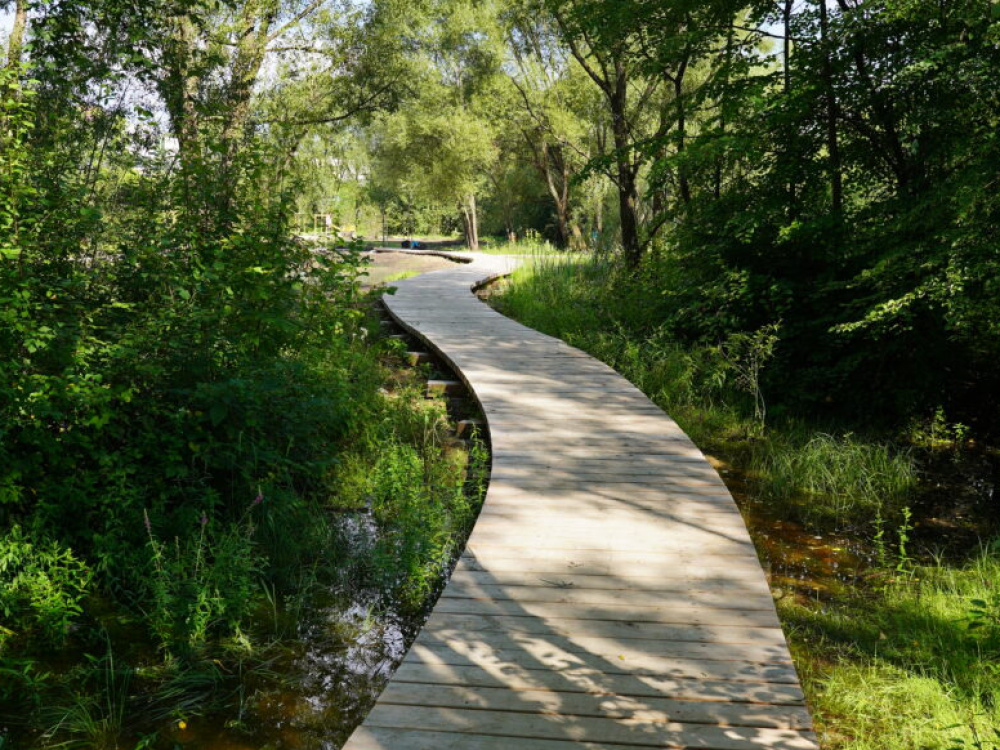St. George's Park in Trnové
The area is located in an open space on flat terrain in close proximity to the unique wooden church of St. George in the district of Žilina - Trnové.
The area is bordered by the local stream Trnovka, a bio-corridor of local importance, which will function as a natural meander that passes through the area in the future. The Trnovka stream is planned to be regulated, but we want to preserve the bio-corridor on plot no. 1408/79 of 857 m2 and plot no. 1408/80 of 64 m2, which will be part of the park. The area is bordered by a local road from the east. To the north, the area is bordered by a blind unpaved road, which is to be transformed into a local bike path in the newly planned general building scheme. At present, the area is largely composed of original riparian vegetation with woody plants planted by natural seeding and herbaceous ruderal growth in places where the land has been slightly landscaped. As a result of the high water level, there are waterlogged areas and wetlands with attractive flora.
The addressed area can be divided into three basic parts, namely an open meadow area, wetland with natural vegetation and smaller open meadow area. Currently, a third of the park improvements is complete, namely the flagstone pathways of the park's entrance area, piers with a smaller wetland area, a stage for cultural events, and the park's lawn for leisure activities. The most ecological section of the designed area is the central part of the park with groups of native willows, an extensive wetland area and natural vegetation, while the design of the solution provides for the construction of a wooden pedestrian pathway in a part of the natural wetland area. This part of the park acts as an important eco-stabilizing element for the surroundings, accumulating rainwater and increasing the area's biodiversity. The last part of the park is characterized by scrubby willow stands and generally appears to be isolated in comparison to other parts of the park.
The design of the solution lies in the maximized utilization of the current state of the terrain layout and the existing greenery. The design seeks to support the existing character of the area with new outplanting and make it more accessible to residents with pedestrian routes, small-scale architecture and larger extensive and intensive lawns.
The newly created space will be characterized by its natural style and highly ecological nature, as it uses the original terrain depressions that serve as natural wetlands. The open spaces are designated as meadows for leisure and are maintained intensively and partly extensively.
The solution also provides for occasional events organized by the Trnové district. For this reason, a so-called paved gravel lawn has been built in the central part of the area, which is resistant to temporary trampling. This part is surrounded by a gentle slope with intensive lawn, from which the paved part is clearly visible.
The natural park construction in the center of the Trnové district will provide an interesting recreational and relaxation area for the residents. As there is a planned urban bike path along the park, this area will be used by all residents of Žilina. The unique wooden church of St. George will have worthy surroundings and the nature park will also be an interesting educational center for the adjacent kindergarten and primary school.
Terrain modeling, modification of existing wetland
The existing wetland is characterized by significant anthropogenic and successional influence, which affects its functionality and overall appearance. In consultation with ecologists, we have developed a process for the restoration of this natural wetland. The revitalization consists of landscaping through multiple terrain depressions, which will cause a gradual decomposition of the entire wetland system. The advantage is that in the event of extreme rainfall, the adjacent stream will gradually pour into this network of landscaped depressions, resulting in flood protection, and also the accumulated rainwater will naturally soak into the groundwater. The terrain depressions are not very deep, reaching a maximum of 1.0 m. This modification will also restore the original vegetation, which has been suppressed by anthropogenic and successional influences.
 Slovak
Slovak


